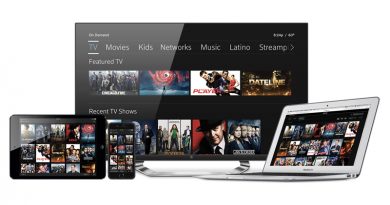Trojan Television
By Stewart Schley
Are new OTT video boxes traps waiting to be set off?
Coincidence is what happens when seemingly unrelated events share remarkable concurrence without — this is the important part — a causal connection. If two fleet-fingered guitarists randomly come up with identical riffs in the same week, it’s probably coincidental. If one has closely studied the other’s technique, it’s probably not.
So it’s advisable to look skeptically at a fresh concurrence happening in the modern video industry: the tendency for new types of “over-the-top” set-top boxes to arise at the same time their manufacturers step up investments in video content delivery.
Examples: Apple makes a connected TV device called Apple TV. It’s also readying a new video-streaming service. Roku, a prominent and popular connected TV device manufacturer, has launched a network called the Roku Channel. Amazon markets the Fire TV line of devices and has a growing video content operation including the Amazon Prime video service.
And Google’s parent Alphabet, the owner/operator of YouTube and the new YouTube TV streaming service, has popularized the Chromecast line of Internet-to-TV bridging devices.
If you believe these are coincidental developments, we have an aging CMTS to sell you.
Seriously, the concurrence of OTT video hardware and video content is worth examining to understand the new competitive dynamics happening — or about to happen — in the pay TV sector. Each of these Big 4 providers of connected TV set-tops, per a 2018 ranking by researcher Parks Associates, has a video programming business. To some observers, this fact provokes worry about a sort of Trojan Horse attack, where a video box in somebody’s home will one day open up to spill forth a sinister attack.
Imperfect analogy
The Trojan Horse analogy is irresistible, but imperfect. Remember: The oversized wooden horse from Greek mythology was pure subterfuge, a vessel of attack masquerading as a statue. Here, the strategies are well out in the open.
For example, Roku’s grand plan is this: The more Roku boxes in homes, the bigger the footprint for delivering advertising messages within the TV networks Roku distributes. As of Dec. 31, 2018, there were more than 27 million activated Roku accounts, translating to a large-scale delivery system for targeted TV ads.
Apple hasn’t been quite as forthcoming about its hardware-meets-content intersection, but there has been lots of informed speculation that the idea is to create similar hardware-content symbiosis. The more than $1 billion Apple is putting into original video content is likely, many believe, to render an attractive video service you can watch on one condition: you have to own an Apple device. No iPhone or no Apple TV equals no Reese Witherspoon or Steven Spielberg (both are producing shows for Apple).
Then there’s Amazon, which also appears to believe there’s more to the box than just the box. Amazon’s Fire TV line of IP video devices dovetails with rising ambitions in programming, where Amazon has become a big player with the Amazon Prime subscription video service, the Amazon Channels pick-and-choose collective of video services, and new advertising-supported offerings like IMDb Freedive.
Chances are we haven’t yet seen the ultimate realization just yet. But we do know the tech companies have far-reaching ambitions to play all-encompassing roles in the lives of consumers. The grand corporate strategy is probably to leverage a physical presence inside the home (and in some cases, the portable media world), with an advantaged position vis-à-vis programming delivery and program visibility.
Conspiracy theory
Here’s the non-coincidental/conspiratorial view: A Fire TV user fires up (sorry for the pun) her/his Amazon device with an aim of finding something good to watch on TV. If it’s an Amazon-manufactured, Amazon-promoted device, there’s probably a good bet Amazon-created programming will find its way to the surface, right? Especially if the user turns to her/his trusty assistant Alexa to recommend a program or two. “So glad you asked,” the soothing voice might reply. “People are saying really wonderful things about ‘The Marvelous Mrs. Maisel’ on Amazon Prime. Would you like me to show it to you?”
Or so goes the theory. In reality, at least as of yet, we haven’t seen force-fed recommendations get rammed down the platforms. And for all the right reasons: Human beings aren’t so dense as the ideal here might suggest. The moment a connected TV platform becomes known as a captive of its parent company’s programming offerings is the moment sales will shift to a rival’s more open alternative.
The future is probably more nuanced than the example we described. Think instead of hardware devices as part of a bigger symbiosis, involving not just a box and a TV show, but a wider ecosystem. The chess game is about using one part of a business (content) to leverage another part of a business (hardware) to support a third (retailing) or a fourth (rockets to Mars). Merely steering viewers to TV shows is, to be cheeky, sort of beneath the pay grade.
That said, how can cable companies respond? First, by recognizing they, too can play the game. Infused with sophisticated search and recommendation software, newer digital-TV boxes like Comcast’s powerful X1 can out-fire Fire TV in terms of ease of use and consumer appeal. A Wall Street Journal column in April was the stuff of cable PR dreaming. “Here’s a sentence I never thought I’d write: I really like my cable box,” said columnist (and Comcast customer) David Pierce. In other words, anything Fire TV can do, X1 can do, too. And maybe one better. As the Journal pointed out, “Cable companies do still have one ace up their sleeve: They’re still the most popular, and often most affordable, way to get fast Internet, something all those streaming services require.”
The point is, if the world becomes one where hardware control is essential to program distribution, cable has weapons to bring to the fight. Even smaller companies without Comcast’s resources have signed up for battle by deploying sophisticated digital set-tops made by the likes of TiVo Inc. There’s a defensive posture at work here: Every X1 (or equivalent) within a home presents a barrier to entry for would-be rivals. Remember: The Trojan Horse of lore breached the borders of Troy because somebody wasn’t paying attention. In the new video ecosystem, where he who controls the box may be he who controls the screen, it pays to stay on high alert.
 Stewart Schley,
Stewart Schley,
Media/Telecom Industry Analyst
stewart@stewartschley.com
Stewart has been writing about business subjects for more than 20 years for publications including Multichannel News, CED Magazine and Kagan World Media. He was the founding editor of Cable World magazine; the author of Fast Forward: Video on Demand and the Future of Television; and the co-author of Planet Broadband with Dr. Rouzbeh Yassini. Stewart is a contributing analyst for One Touch Intelligence.
Credit: Shutterstock




